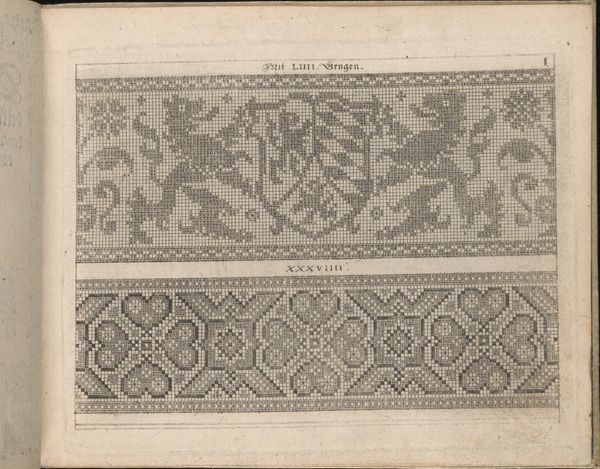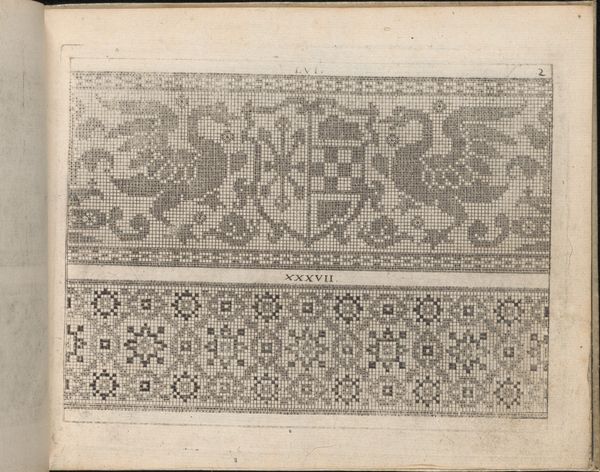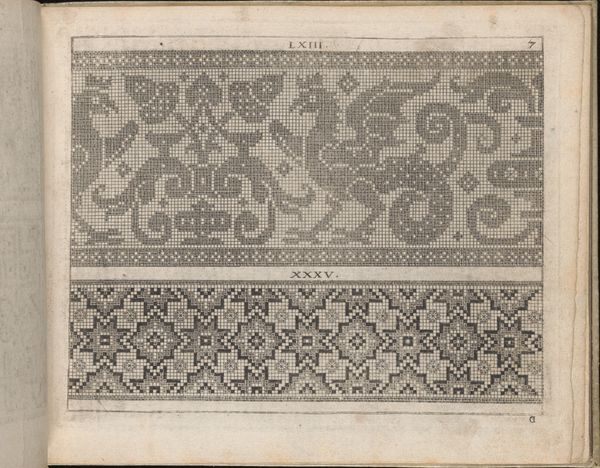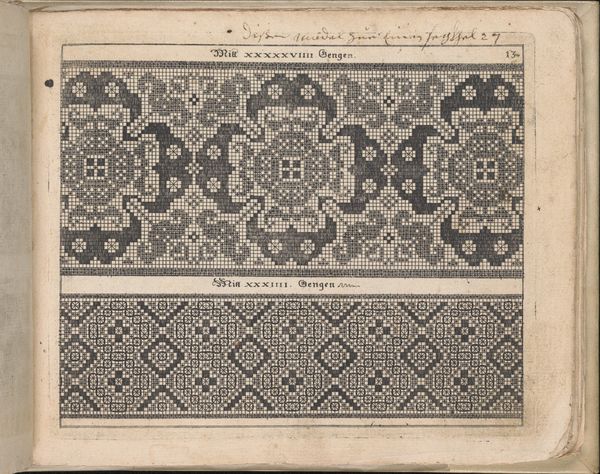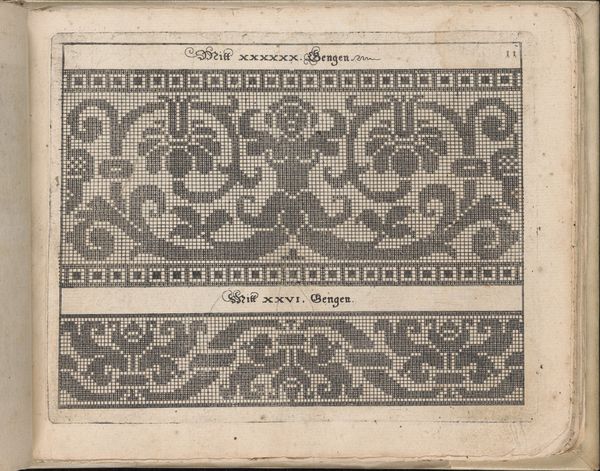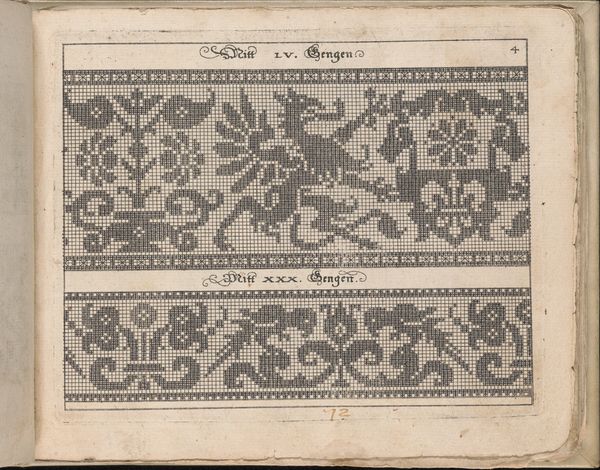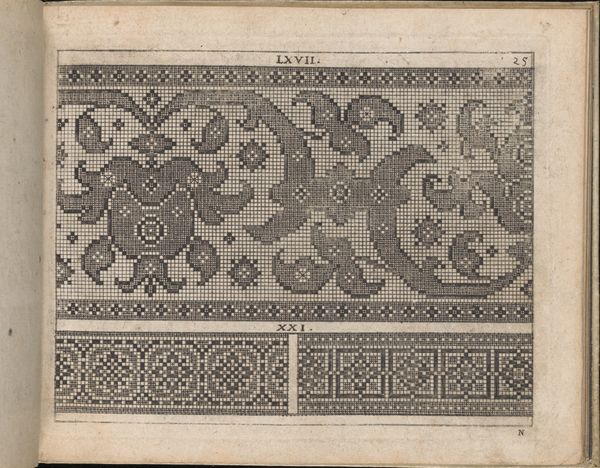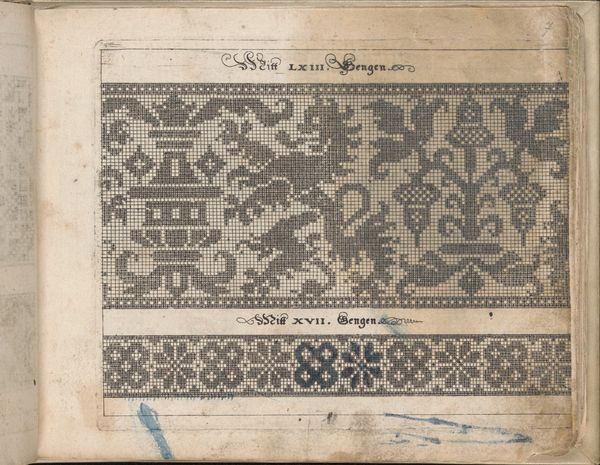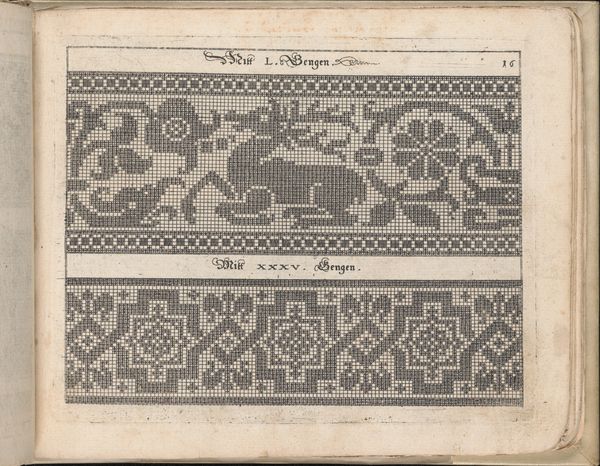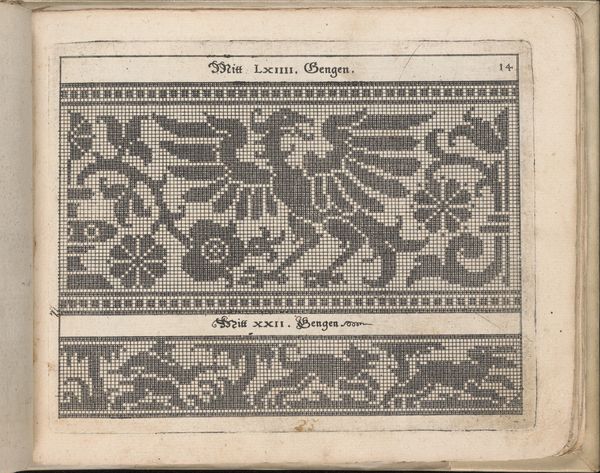
drawing, ornament, print, paper, ink, engraving
#
drawing
#
ornament
#
toned paper
#
ink paper printed
# print
#
book
#
pattern
#
paper
#
11_renaissance
#
ink
#
geometric
#
pen work
#
northern-renaissance
#
engraving
Dimensions: Overall: 6 1/8 x 7 13/16 in. (15.5 x 19.8 cm)
Copyright: Public Domain
Editor: So, this is a page from Johann Sibmacher's *Schön Neues Modelbuch*, dating back to 1597. It’s a print showcasing patterns, almost like pixel art. The intricacy is incredible, but I'm curious – what role did books like this play in society at the time? Curator: Excellent observation. These “model books” weren’t just art; they were crucial for disseminating designs and shaping material culture. Think about the social impact: this allowed for wider access to fashionable patterns for embroidery and lacemaking. It democratized aesthetics, albeit within certain social strata. Editor: So, it's less about high art and more about the application of design in everyday life? Were these designs accessible to everyone? Curator: That's the crux of it. While not *everyone* could afford the materials or training to execute these designs, the availability of these patterns did challenge the traditional control of design by elite artisans. It fed into a burgeoning market for luxury goods and personal adornment. Who benefits when patterns become standardized like this? Editor: Hmm, so perhaps merchants and workshops who could reproduce these patterns at scale? Does this affect the status of the individual artist then? Curator: Precisely! The printing and distribution of these books shifted the power dynamic, raising questions about authorship, ownership, and the commodification of creativity. Also, consider the politics of imagery – were these patterns promoting certain social values or ideologies? What's your reading of these patterns themselves, removed from our historical assumptions? Editor: I see...The patterns have some familiar geometric shapes mixed with something almost bestial. Maybe promoting order over chaos? The tension between nature and civilization perhaps? Curator: Exactly, analyzing it with that tension in mind really grounds the historical perspective to what may be the reality of production at the time. Editor: I see that analyzing the artwork by putting on your historical perspective and how books influenced everyday artisans reveals the democratization of knowledge and shifting dynamics of artwork and creation. Curator: Indeed, seeing the artwork with you has broadened the effect the book had during the Renaissance!
Comments
No comments
Be the first to comment and join the conversation on the ultimate creative platform.
